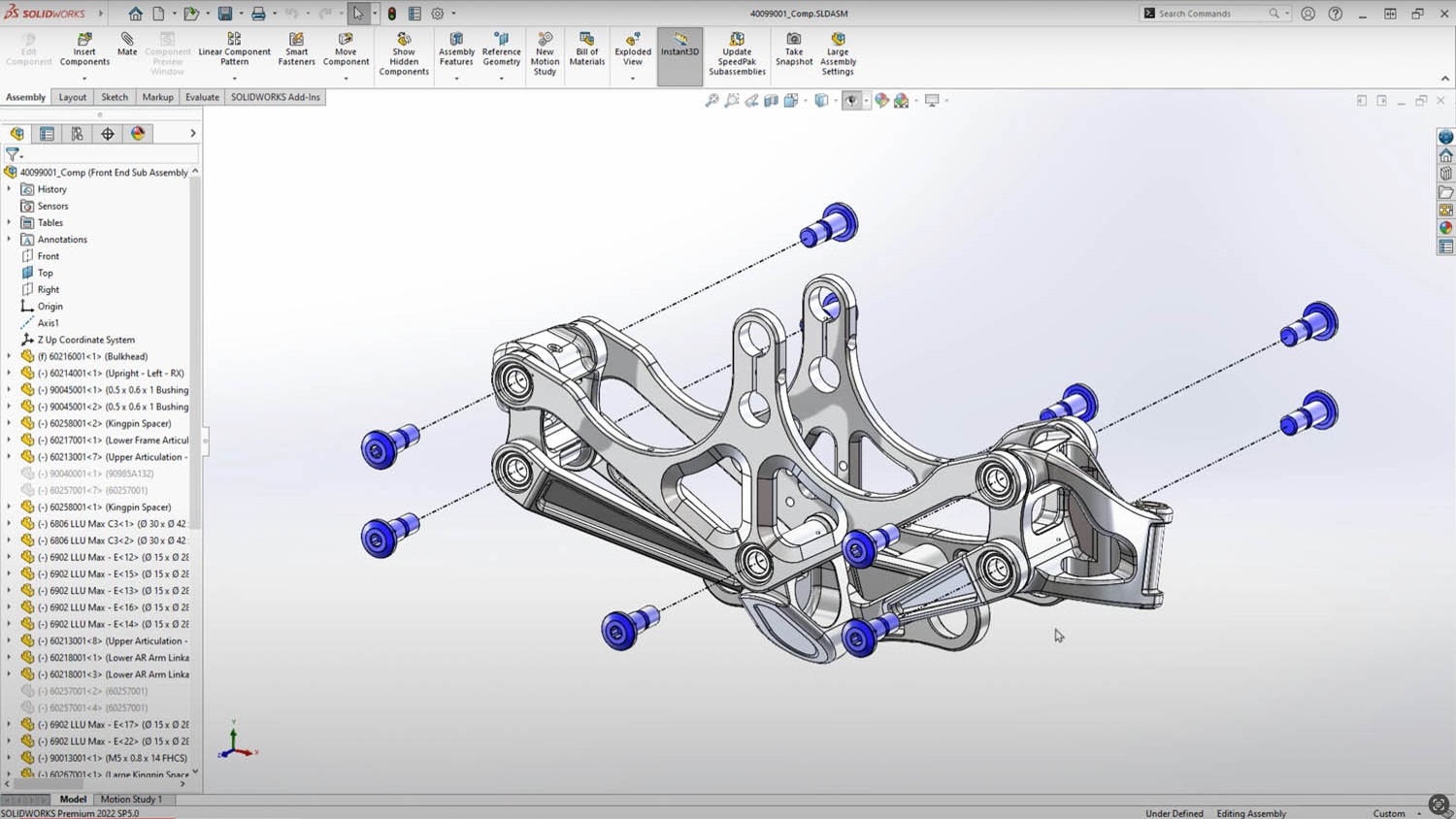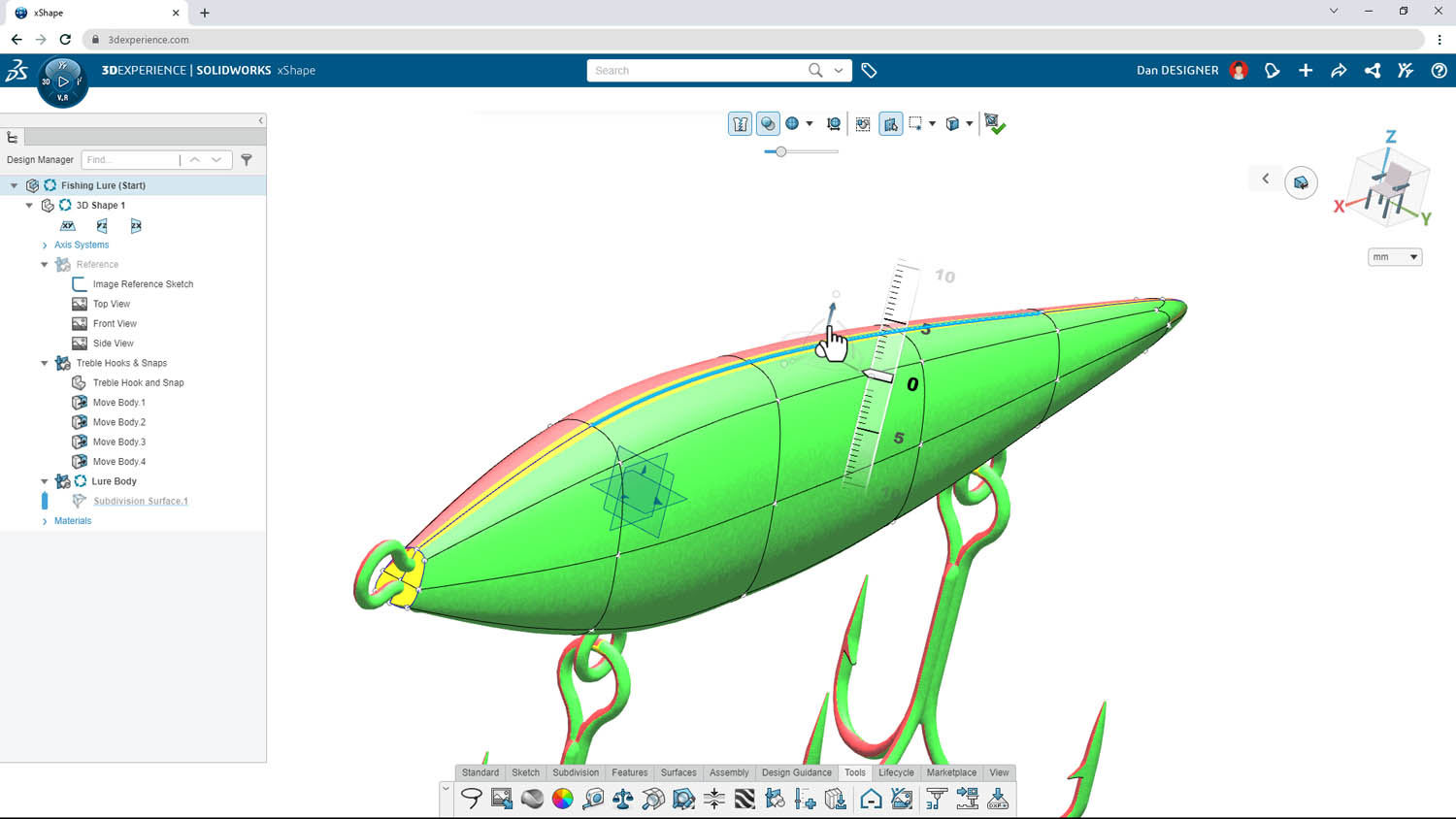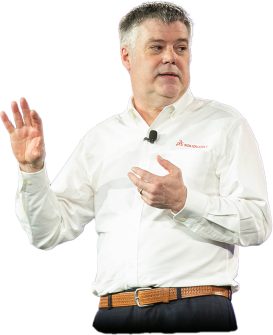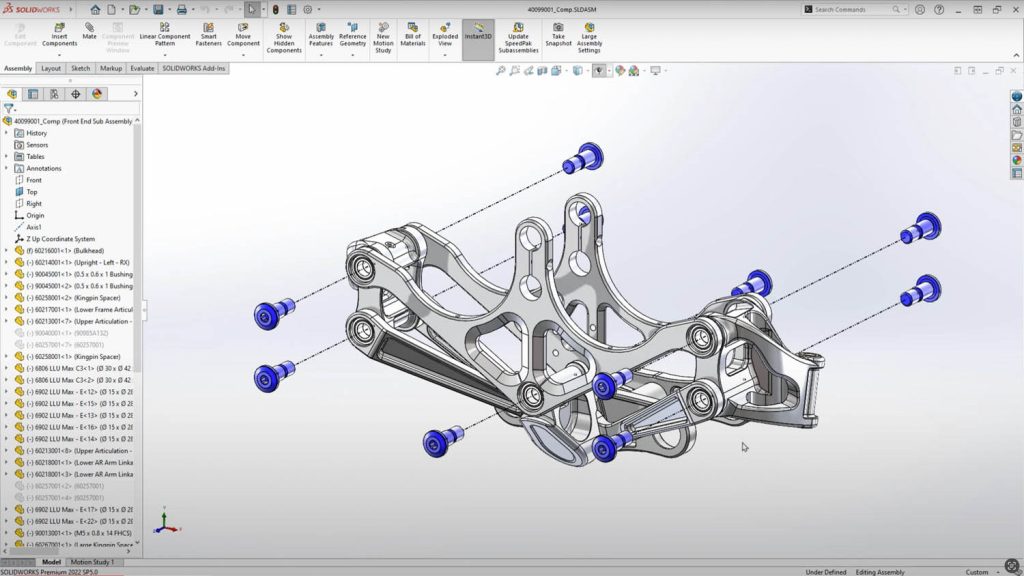DEVELOP3D spoke with Stephen Endersby, director of product portfolio management for Dassault Systèmes/Solidworks, in order to get his perspective on the recent Solidworks 2025 release and find out where he believes the software will most effectively push back boundaries for design workflows
Q (DEVELOP3D): Solidworks 2025 is a new release, but would it be fair to say that things have changed at Solidworks, in terms of how release cycles now work?
A (Stephen Endersby): This is the twenty-first release of Solidworks in which I’ve been involved. And what’s interesting for me is that, in the last few years, like many other vendors, we’ve changed the way we release software.
In the past, you’d have a major release with all the new functionality, and then you’d have service packs for bug fixes. In recent years, we started dropping functionality into the service packs, with the idea being to get new functionality out to the users fast.
If a customer finds an issue, it comes back to the developer while it’s still fresh in their mind – not a year later. So, when we look at what’s new for this release, it’s more a celebration of all the functionality that has happened in the last 12 months.
Q: With that in mind, there are over 200 new functions and updates in this release. Which of these stand out for you the most?
A: It’s a very personal view, based upon how I use Solidworks (because I actually do use it myself ), how the customers I’ve seen use Solidworks, and which of the features I believe are going to solve real problems for them.
In this release, there is an AI command predictor that uses a machine learning model to help you, based on previous behaviours of the wider Solidworks audience. It can deduce from what you’re selecting whether you’re looking to perform an extrude, revolve or whatever, and help guide you.
This is about helping people go faster. We’re not doing AI for AI’s sake. We’re doing it where we feel there’s a positive impact
Q: But is something like that really going to be of help to the experienced Solidworks user?
A: Maybe, when performing some odd or uncommon tasks – but it’s definitely going to help new users coming in. These are not just students, but also people who are moving from another CAD system to Solidworks. Because if I’m coming from another CAD software, I know how to extrude, but maybe I don’t know where the button is in the Solidworks user interface.
So this is really about helping people go faster. It comes down to the fact that we’re not doing AI for AI’s sake. We’re doing it where we feel there’s a positive impact. It’s about enabling the user, as opposed to it being a magic wand.
Q: On that subject, what wider impacts do you see AI having on the Solidworks platform?
A: I think there are defi nitely some tools out there that would really benefit from AI. And I think, over the next year or so, you’ll see a lot more becoming what I would call ‘production ready’ and really ready to go. It’s not something that’s a core focus for Solidworks right now, but I think in the future, we’ll see a lot more of it.

Q: Collaboration tools and ECAD have both seen some upgrades this release. What can you tell us about the thinking behind that?
A: Collaboration is key, and we started that game a long time ago with eDrawings. People were sending eDrawings files and marking them up. Now, we’re moving more towards using 3DSwym communities that you can access from directly inside your CAD system, so you have a really tight understanding and a tight communication chain with whoever you’re working with. I think that’s the future need. In fact, it’s a future necessity!
With ECAD, meanwhile, we’ve got a lot of our customers now working with ECAD-MCAD workflows. So we’ve changed the way we handle data exchange to IDX, which is a much richer format, and done a lot of work with CircuitWorks to enable that workflow. There’s lots and lots of things going on in here.
Q: When you look at this latest release, is there one particular tool that you feel has gone to a whole new level, functionality-wise?
A: I think if I was to choose one thing that’s now a really strong tool, I would probably say it’s the xShape app for sub-D modelling. There are a lot of new tools in xShape, helping not only to control a shape in the context of something else, so it has to marry up and match up. There’s a lot of work in there to ensure users have the connectivity they need.
So maybe the majority of your design is going to be in traditional Solidworks, but you want to develop an organic shape. Using 3D Sculptor or xShape is the way to do that.
I think people who maybe looked at xShape in the past and thought it was not quite there yet should take another look at it. I think it’s a really, really strong tool and we’ve got quite a few customers using it. They are already asking questions and pushing us to develop it even further.
Q: Is there any aspect of the 2025 release that in your opinion will provide a particularly good fit for smaller businesses?
A: If you’re a user at a smaller organisation, one of the benefits of the platform is that it allows you to punch above your weight with access to a lot of tools, just like the big boys use. But the challenge for a small company is that they’ve maybe got 10, 15 or even 20 years of legacy in what – for 90% of our users – would be Windows folders.
So they’ll be asking: ‘How do I get my stuff from here to there? Do I even need to get myself from here to there?’ We’ve done a lot of work on the sorts of tools that will help people move their data from where it is currently to the 3DExperience platform. From there, they can use the platform to work in a global way, taking advantage of all these communities and collaboration tools to work as part of a larger organisation.
I think that’s one of the main things that we’re trying to achieve here – to create a platform to help smaller companies work with global organisations and pitch anywhere around the world.

Q: A lot of the most attention-grabbing aspects of the Solidworks 2025 release are not just about creating geometry, but also focus on online collaboration and cloud file management. How do you view that shift?
A: I think that if you’ve used OneDrive or if you use Dropbox, you can use the 3DExperience platform in much the same way – if you choose to do that. But if you then take that one step further, then its benefi ts magnify with each small step forwards. I think it’s now the case that, in a couple of years’ time, people will wonder what the fuss was all about? Because it’s obvious that this is how we should work.

The other day, I had to find an old demo set that I had saved to an old external drive. I eventually found it in a box in the loft and, in the end, it turned out that the drive was corrupted. That’s days of productivity lost. And then I remember thinking, ‘I wonder how much data I’ve lost over the 20 years I’ve been working?’ If I was the owner of a business, I wouldn’t want my team using on-premise external hard drives. It’s just too risky. I think it’s a generational thing.
I think the next step is to use the cloud, not just for storage for data, but also as a central point for the whole ideation workflows that we want to see. And what’s interesting is that different industries have different ways of approaching this.
Aerospace is probably leading the way. Automotive is not that far behind. And then lagging a long way behind is probably the AEC industry. For companies in that sector, the paper is the legal document – but cloud is still going to happen. We can see these trends coming, but what we want to be sure of is that our customers have the opportunity to make the switch and not be forced to make it. I think their own business opportunities will drive that process. I think as more and more tools become online, not installed-only, this trend will continue. I don’t think people today fear the cloud as a fast storage, data management, collaboration platform, as much as they did five years ago. I think it’s become more normal.
Q: Two years ago, the xApps solutions were packaged with the Solidworks licence. Has that generated a rise in users and is it helping to drive development of those tools?
A: Yeah, I think it is. We’re seeing an uptick in people using this. In fact, we’re seeing a lot more of this sort of merged, hybrid model, that combines desktop and online tools. And we’re seeing newer, younger companies coming in and starting to compete in the X world. I think it’s a trend we’ll see more and more over time.
Personally, I would rather sit in the full online world, because I think to myself: ‘Well, where have I been where I’ve been unable to get online?’ But I think for a lot of customers who have invested in infrastructure, having access to xWorks is a happy middle ground that enables them to start the transition whenever they want.
If I’m a company and I’ve invested in Solidworks for the last 10 years, and I’ve got a lot invested in PDM, and I’ve got inspection, and I’ve got simulation and whatever – it’s OK. I know this works. My business works well on this.
So I think that just by having access to this hybrid world, it will allow users to dip their toes in the water. They might decide that, for their next project, they’ll try using it. And if it doesn’t work for them, then they can always roll back and continue in their established way. I think it’s a case of enabling people to make the change when they actually want to make that change.
You know, the old adage of users using just 20% of functionality isn’t far wrong, in my experience. It’s one of the reasons why we built the online apps. We’re trying to create tools that allow users to focus on the task at hand – and ultimately, to help them design better parts, faster and more efficiently.
Stephen Endersby is director of product portfolio management at Dassault Systèmes. He manages a team of product managers dedicated to delivering innovative solutions to the Solidworks user base across traditional desktop and SaaS platforms.
This article first appeared in DEVELOP3D Magazine
DEVELOP3D is a publication dedicated to product design + development, from concept to manufacture and the technologies behind it all.
To receive the physical publication or digital issue free, as well as exclusive news and offers, subscribe to DEVELOP3D Magazine here






